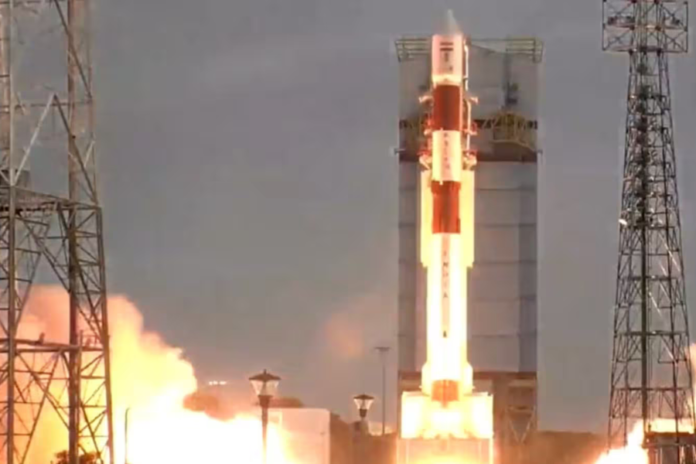On Sunday, the PSLV-C56 rocket of the Indian Space Research Organisation (ISRO) was launched from Sriharikota’s Satish Dhawan Space Centre (SDSC) with seven co-passenger satellites.
Today’s launch occurred at 6.30 am. The rockets being carried by the PSLV-C56 are from Singapore and were launched by the ISRO as part of a bilateral initiative.
“PSLV-C56/ DS-SAR Mission: The mission is successfully accomplished. PSLV-C56 vehicle launched all seven satellites precisely into their intended orbits. Thanks to @NSIL_India and Singapore, for the contract,” tweeted ISRO.
This PSLV mission is the 17th to use the Core Alone configuration and the 58th overall. To ensure the rocket’s upper stage has a shorter orbital life, all the satellites would be injected after the rocket’s upper stage is placed in a lower orbit.
According to the ISRO, the PSLV-C56 was launched from the Satish Dhawan Space Centre’s First Launch Pad (FLP) in Sriharikota.
“PSLV-C56 / DS-SAR is the Dedicated Commercial Mission of NewSpace India Limited (NSIL) for ST Engineering, Singapore. DS-SAR, a Radar Imaging Earth Observation satellite is the primary satellite for the mission. In addition to this, there are six co-passenger customer satellites also belonging to Singapore. All satellites would be injected into a 535 km circular with 5 orbital inclination,” the ISRO said in a statement.
The DS-SAR satellite has been developed under a partnership between DSTA (representing the Government of Singapore) and ST Engineering. Once deployed and operational, it will be used to support the satellite imagery requirements of various agencies within the Government of Singapore.
“ST Engineering will use it for multi-modal and higher responsiveness imagery and geospatial services for their commercial customers. DS-SAR carries a Synthetic Aperture Radar (SAR) payload developed by Israel Aerospace Industries (IAI). This allows the DS-SAR to provide for all-weather day and night coverage, and is capable of imaging at 1m resolution at full polarimetry,” the ISRO statement said.



